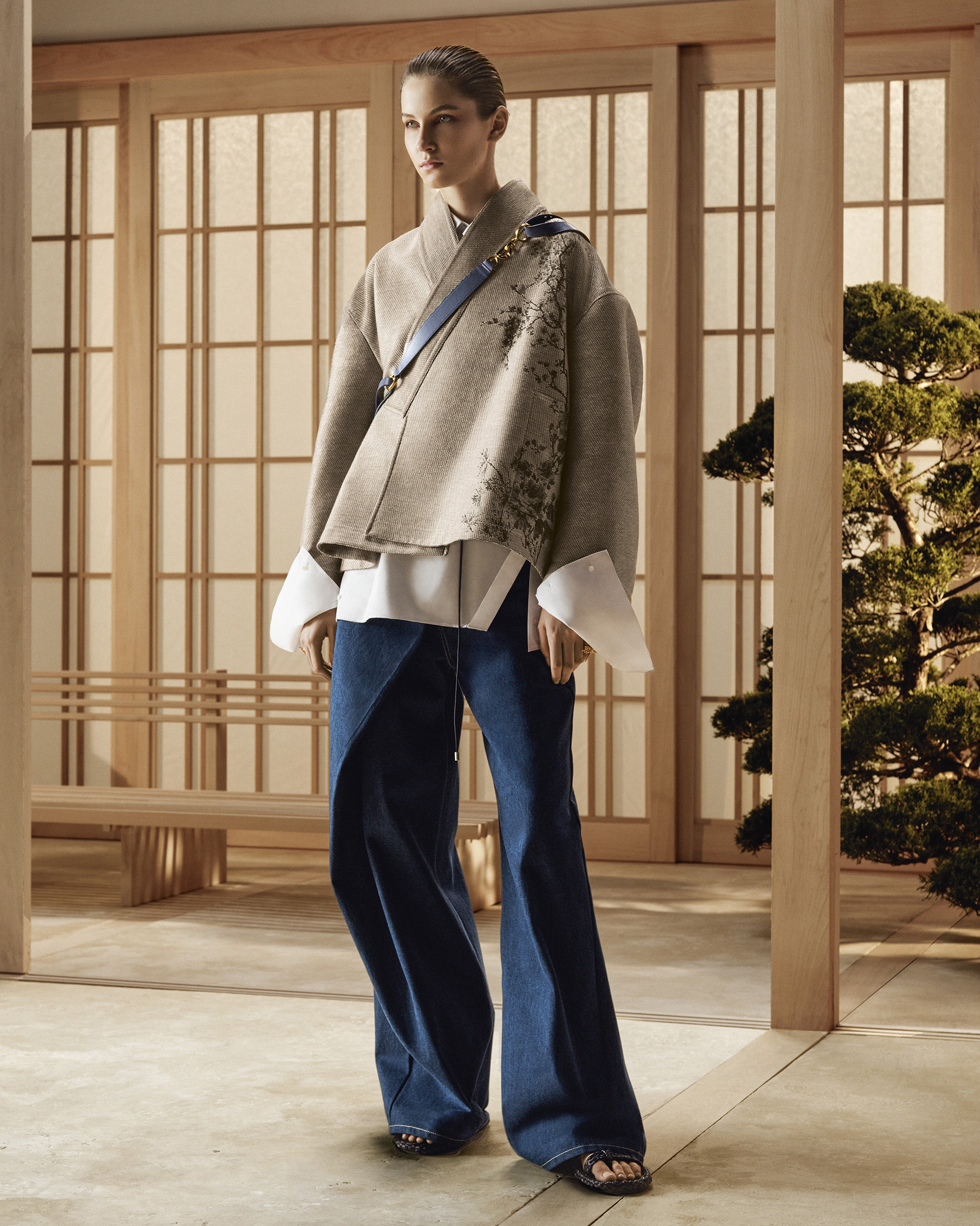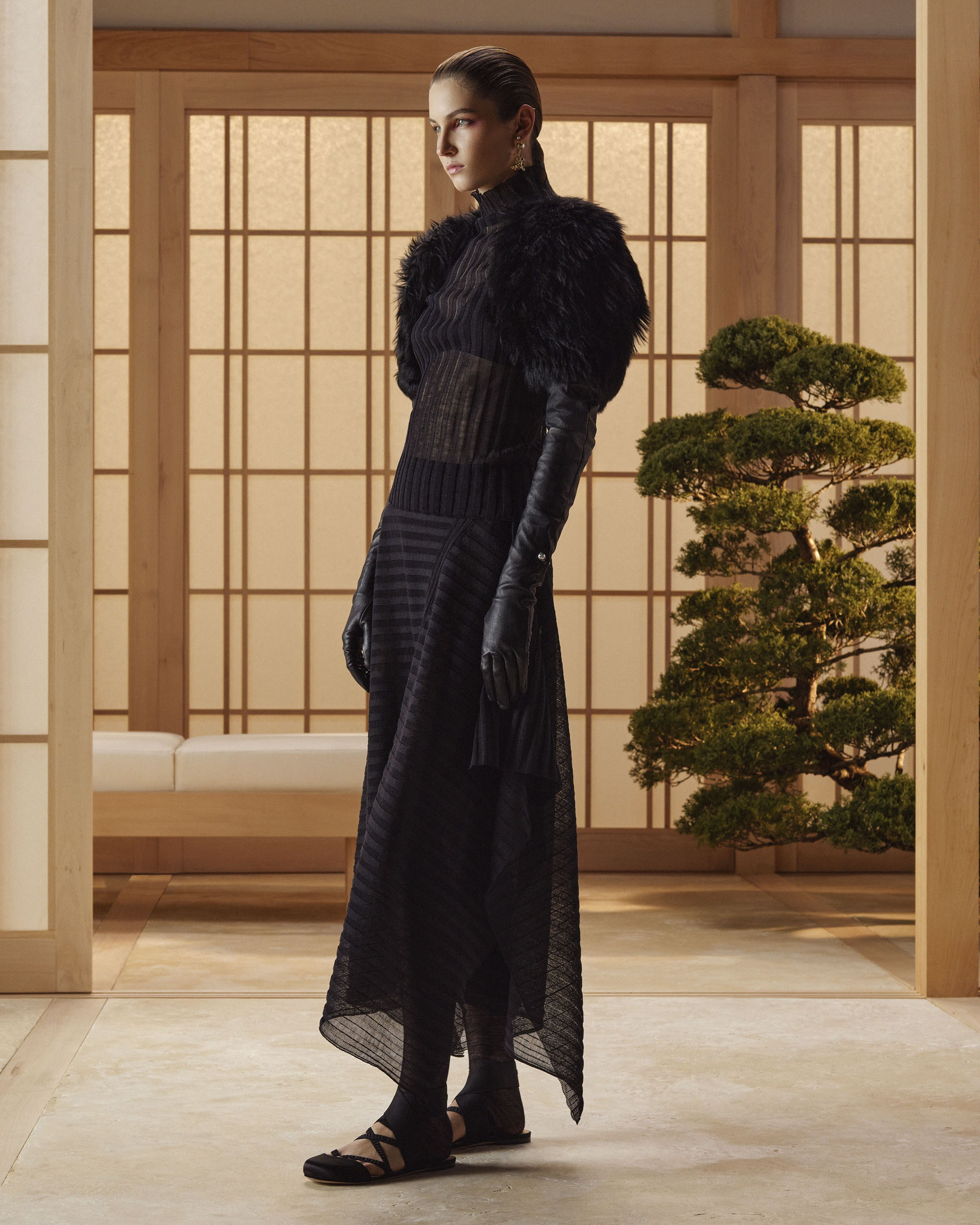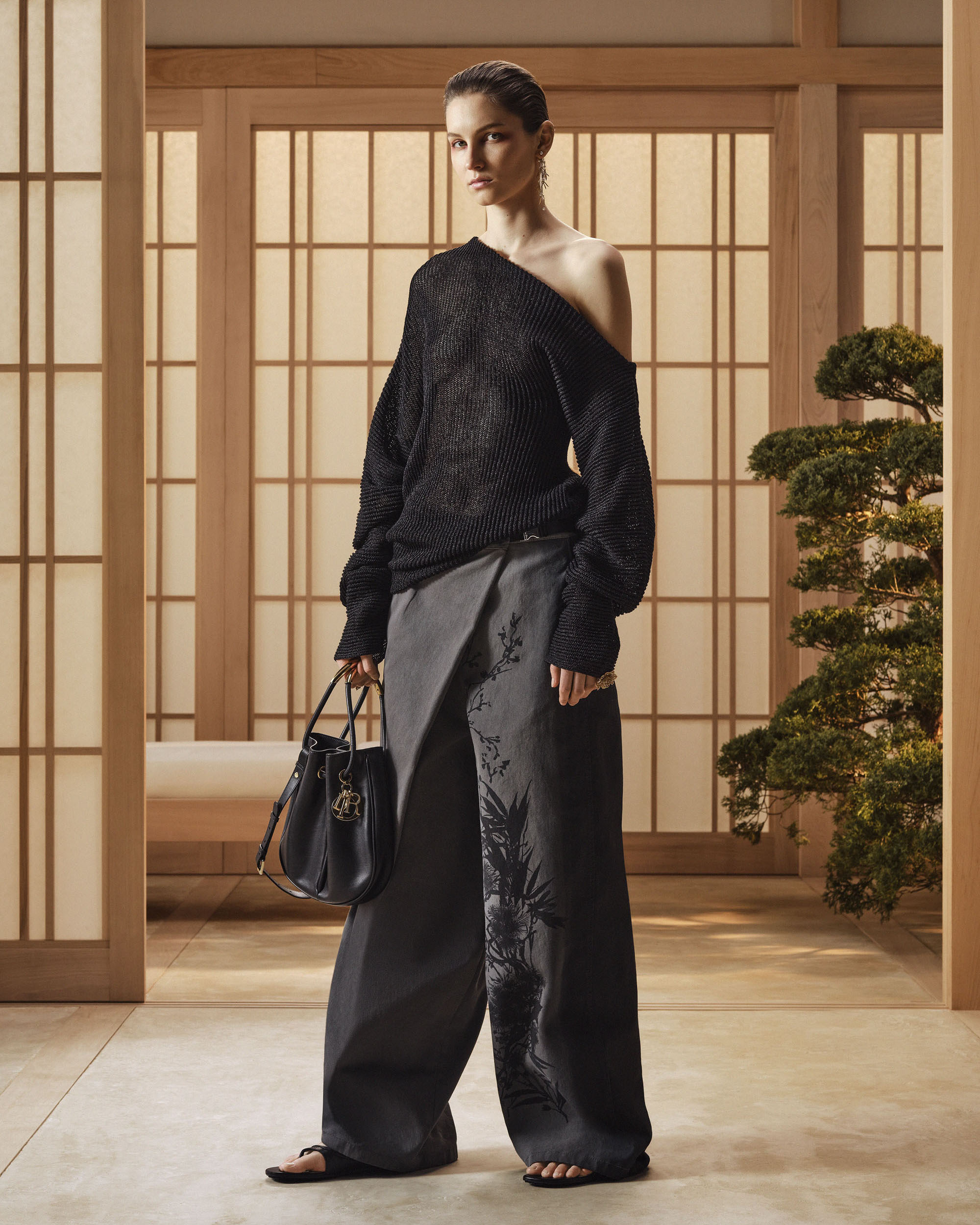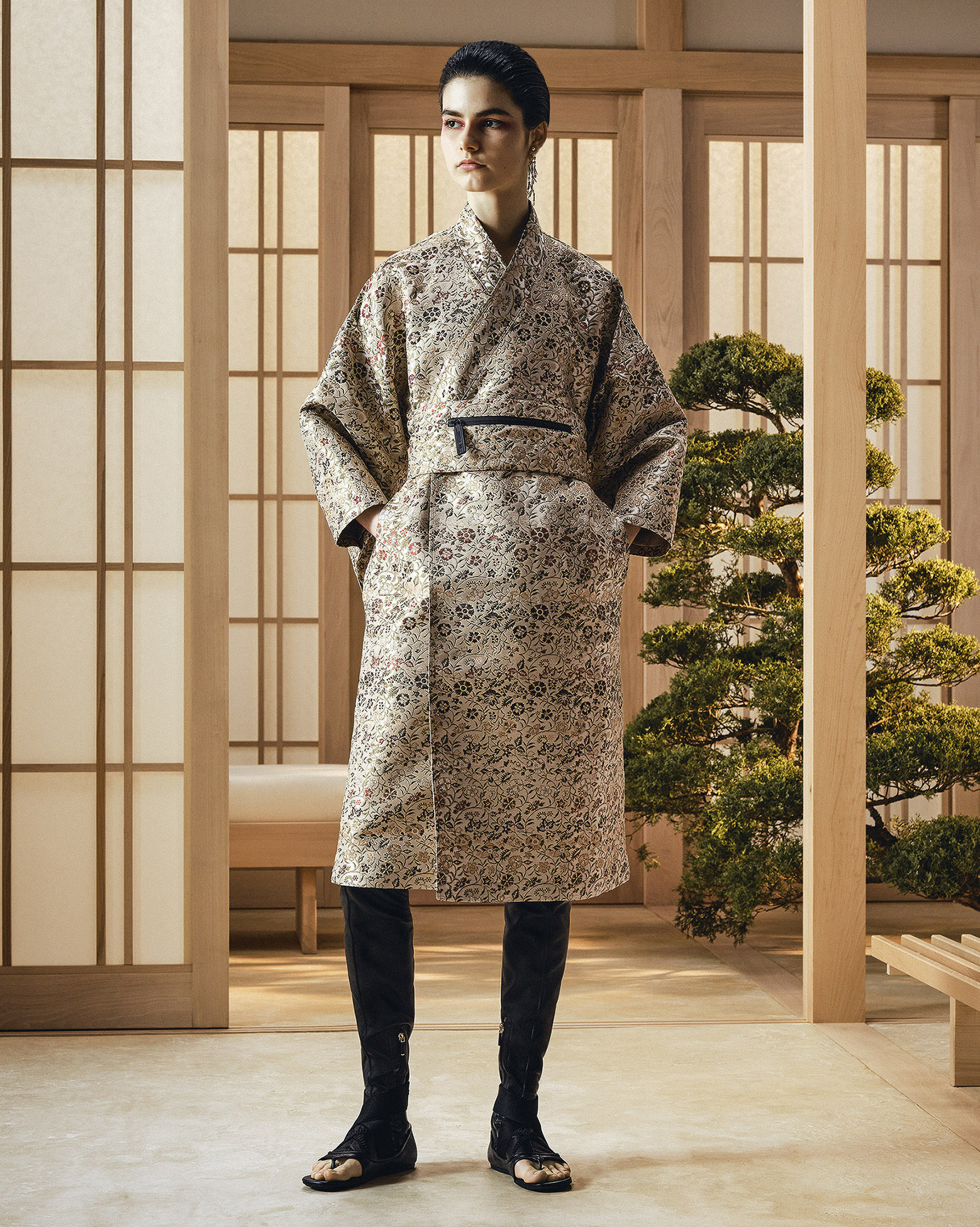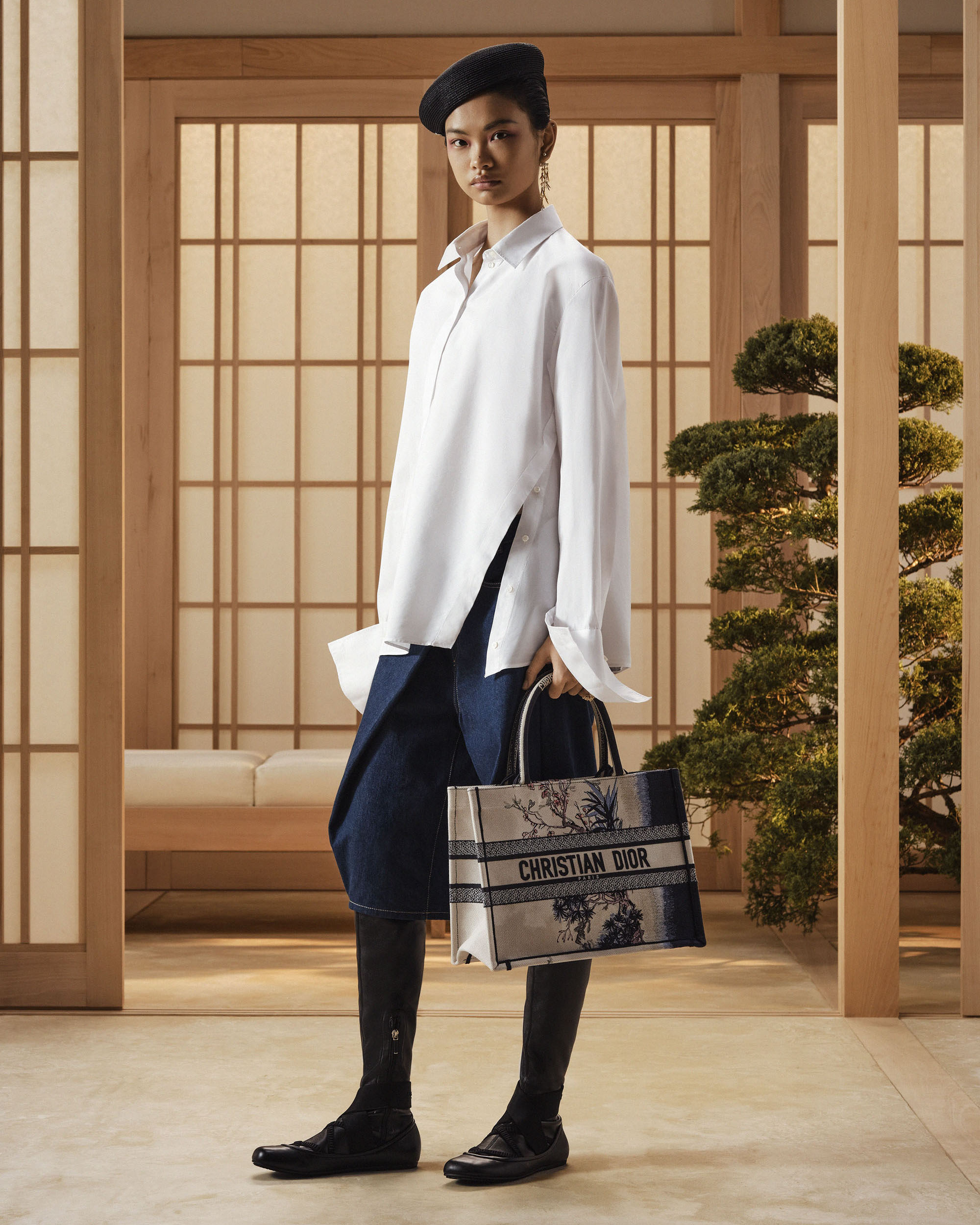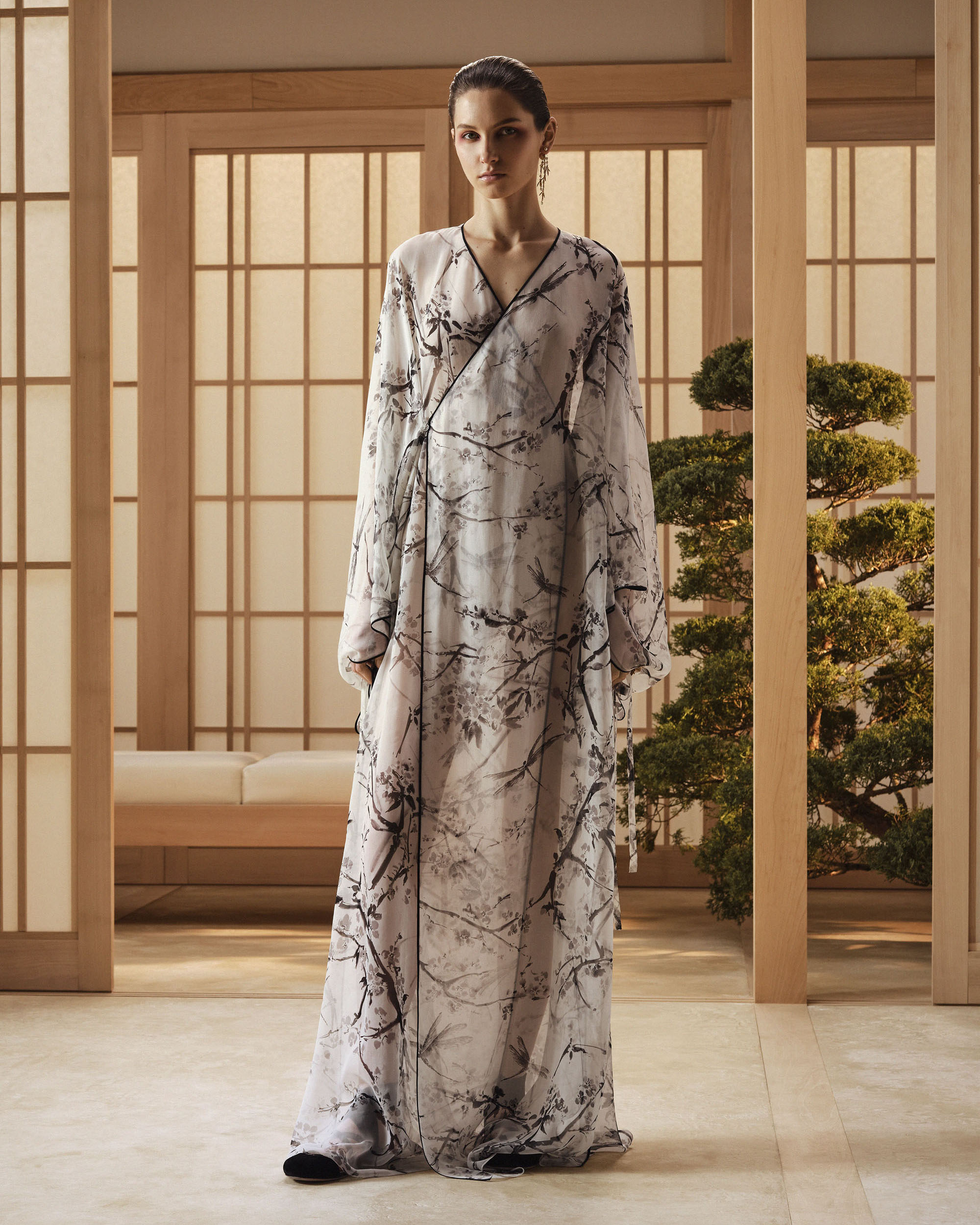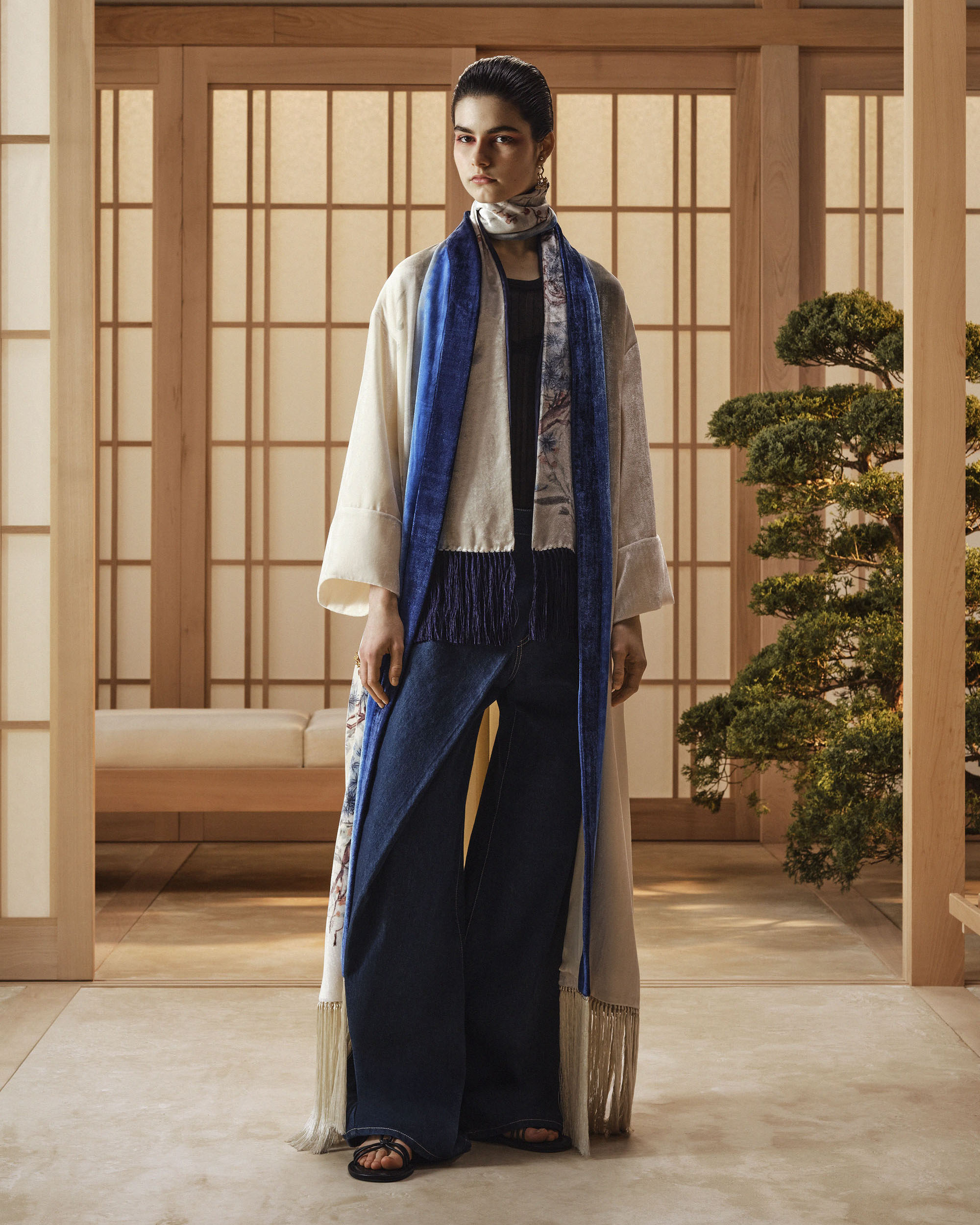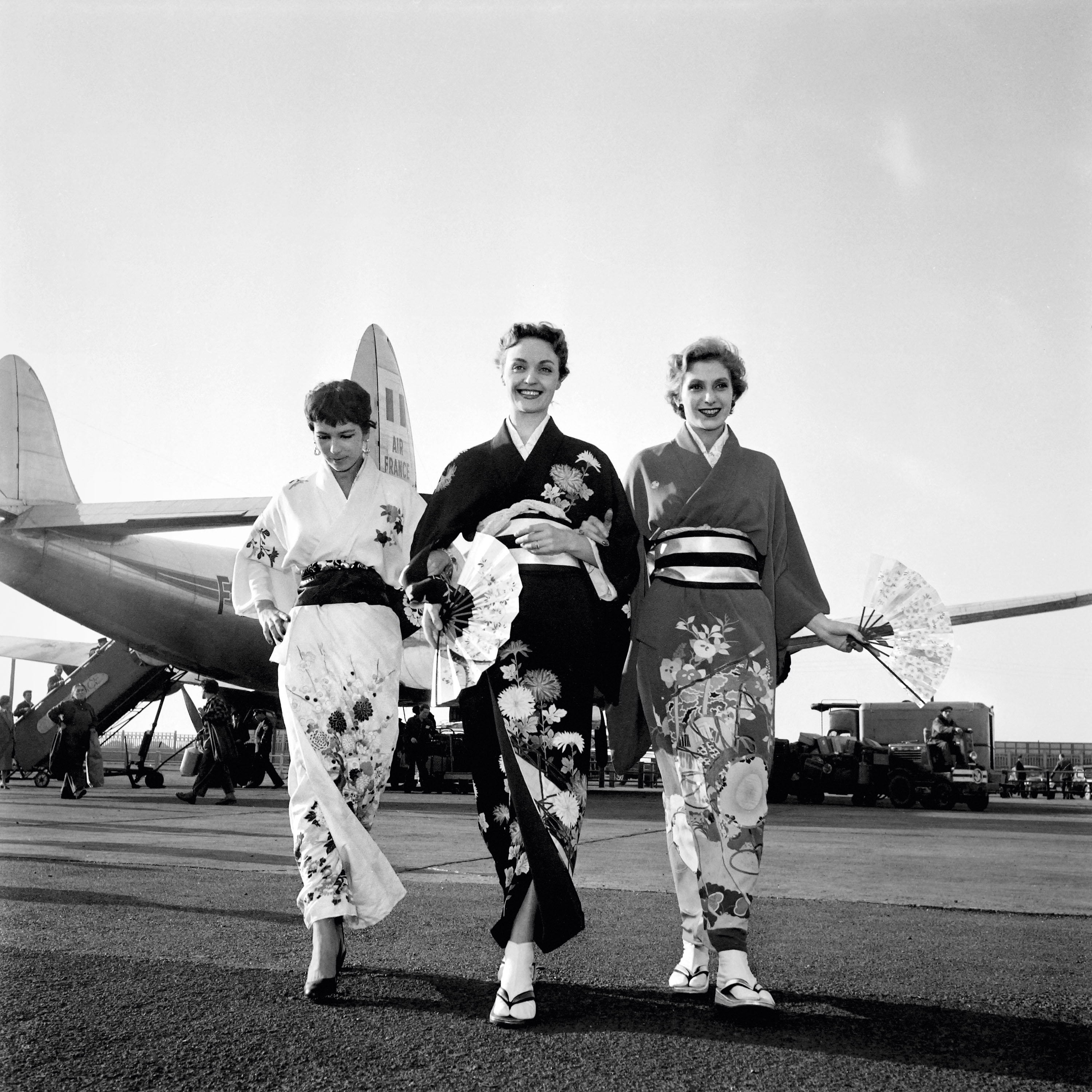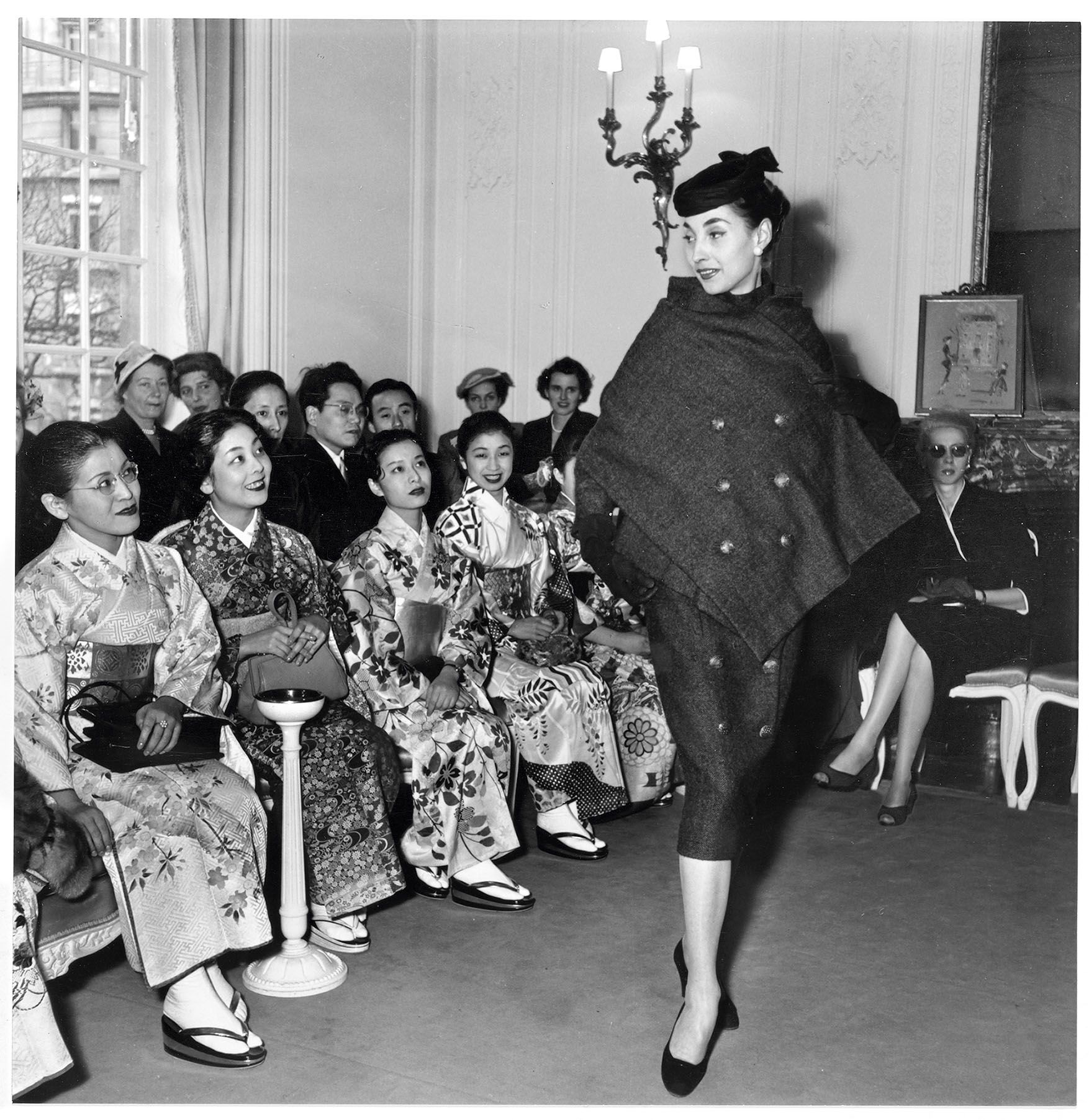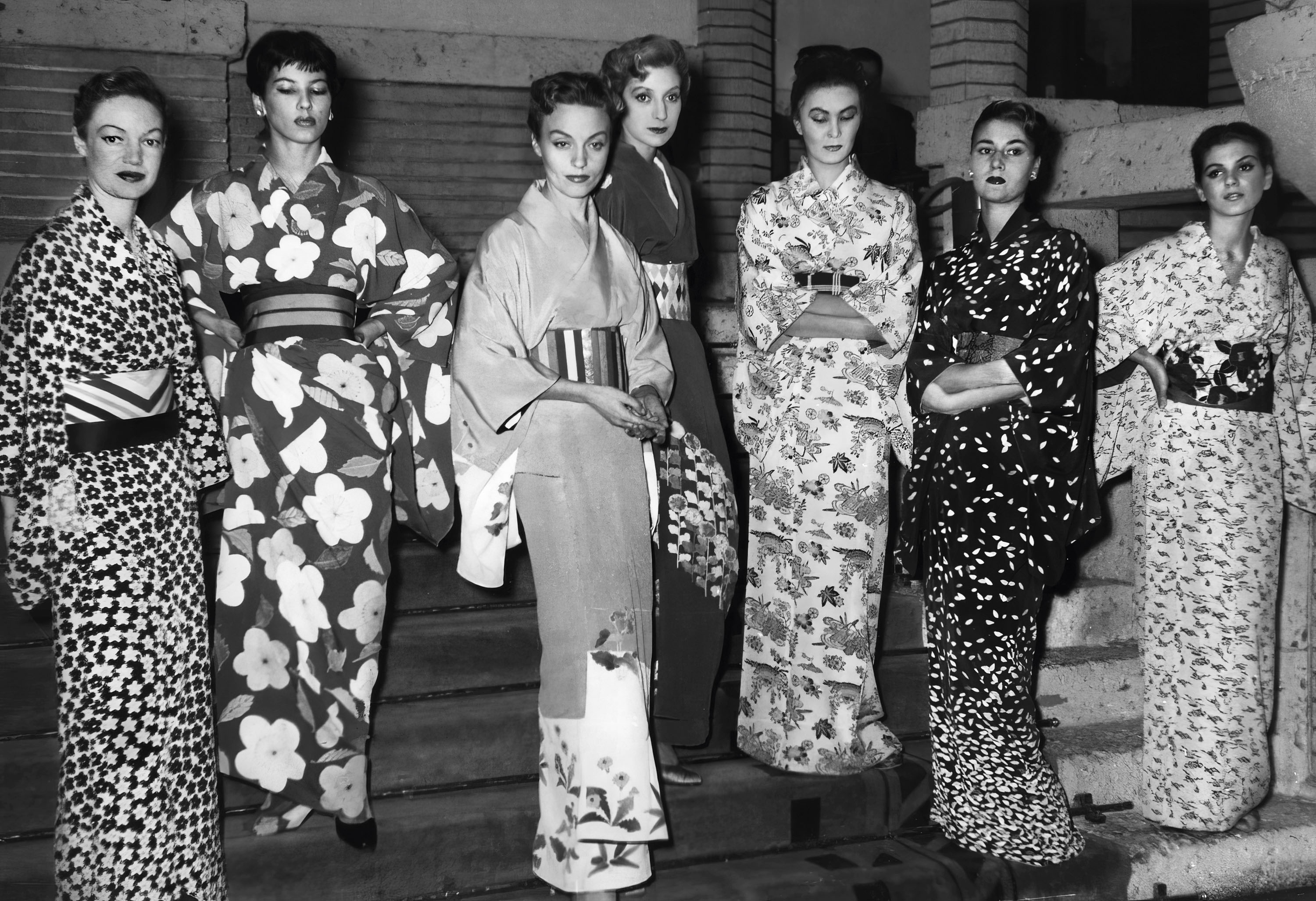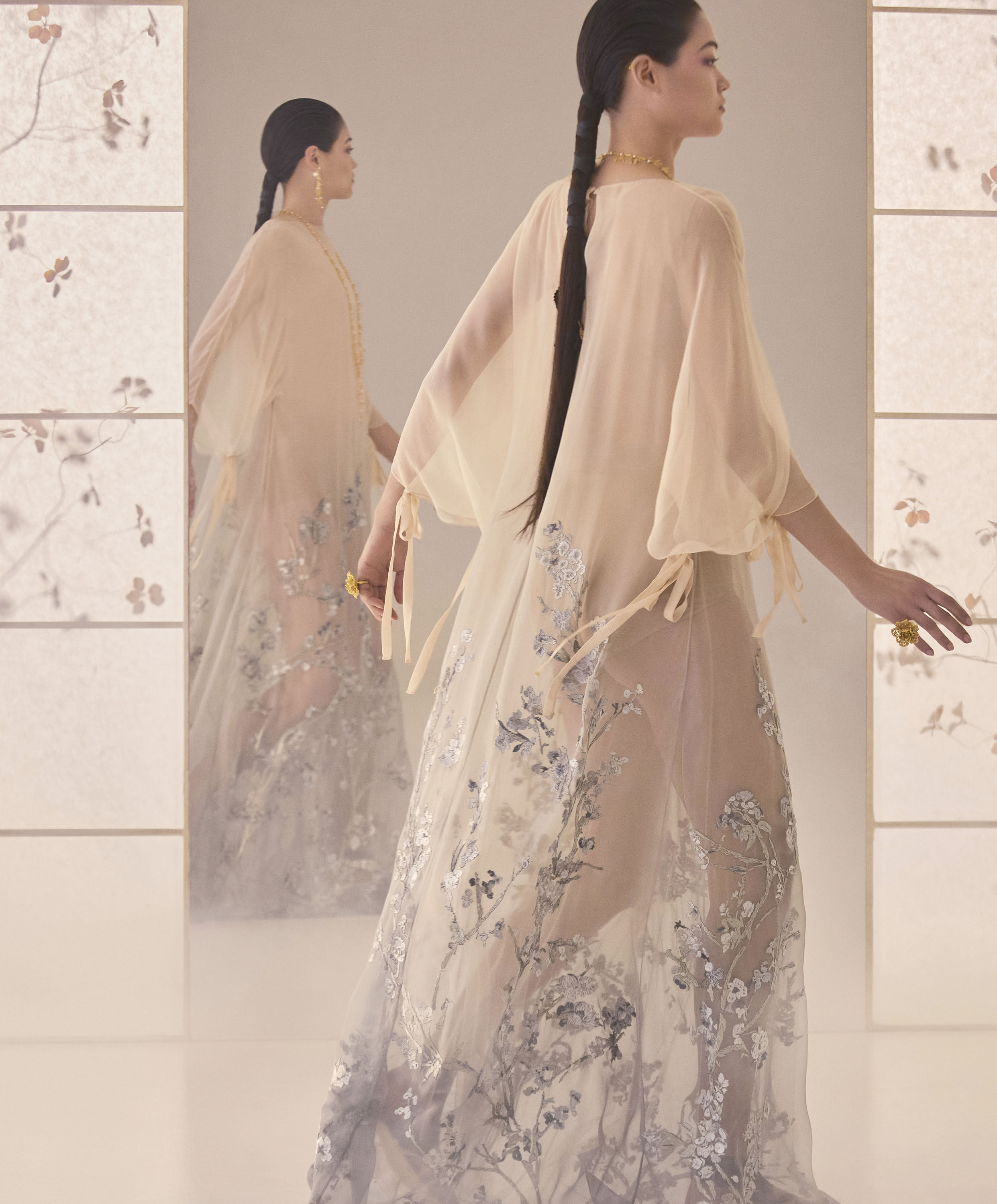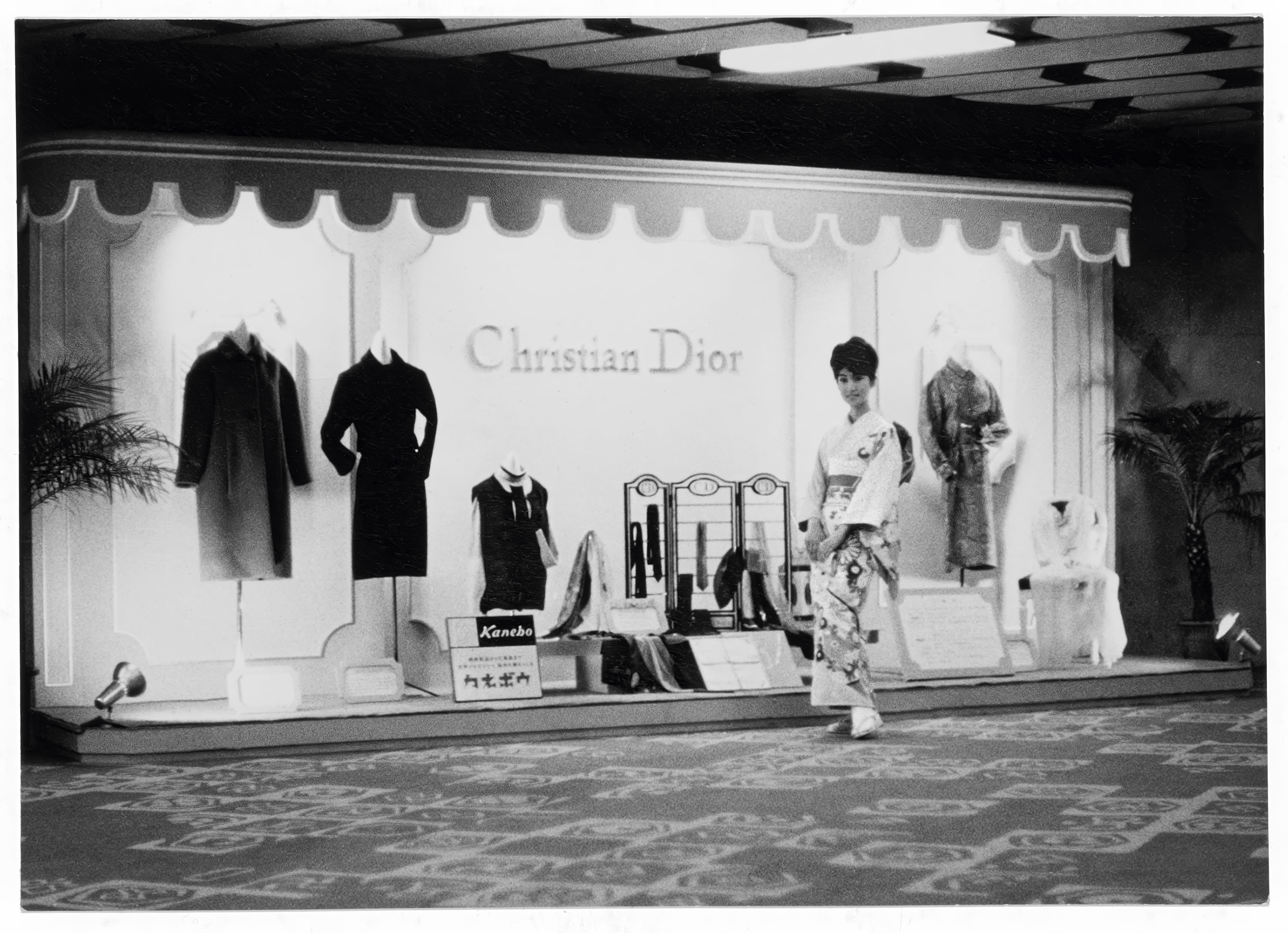FASCINATION MEETS
REINVENTION
Sharing as it does a taste for both the avant-garde and tradition, the House has always forged strong links with Japan. From childhood, Christian Dior regarded the Land of the Rising Sun as a special country to celebrate endlessly. And so it was that He became one of the first European couturiers to influence Japanese fashion. BY LUCIE ALEXANDRE.
“Large panels painted in imitation of Japanese prints adorned the whole staircase. These versions of Utamaro and Hokusai made up my Sistine Chapel. I can remember gazing at them for hours on end…,” Christian Dior recounted in his memoirs, describing the ground floor at the villa Les Rhumbs, in Granville, Normandy. Beguiled by the beauty of the images and their extreme precision, and enthralled by the exoticism of the pagodas, flowers and birds depicted, he developed a genuine admiration for the cultural richness of the Japanese archipelago. |
In November of the same year, the 1953 autumn-winter line was unveiled in Tokyo, Osaka, Kyoto and Nagoya: it marked the first time that a couture house presented its collection in Japan. From that point onwards, Dior enjoyed the steadfast support of major Japanese clients, loyal friends who became its fervent ambassadors. |
“Large panels painted in imitation of Japanese prints adorned the whole staircase. These versions of Utamaro and Hokusai made up my Sistine Chapel. I can remember gazing at them for hours on end.”
Dior and Japan: A Passion Recounted by Akiko Fukai, Director of the Kyoto Costume Institute AKIKO FUKAI: For the autumn-winter 1947 collection, Christian Dior unveiled a long coat in cobalt-blue silk taffeta, which is held in the collection at the Kyoto Costume Institute. The willowy elegance of its gently flowing lines could have come straight from a painting by Antoine Watteau. The late Richard Martin, a former curator of The Costume Institute at the Metropolitan Museum of Art, likened that piece to the uchikake, the long robe traditionally worn over a kimono for highly formal occasions. We can see that influence in many designs by Monsieur Dior in subsequent seasons. AF: Japanese kimonos did not emphasize the curves of the body as had conventional Western clothing; they covered the body without being moulded to an individual figure. This abstracted, standardized format was not gender differentiated, and so created a unisex garment. It was precisely this distinctive morphological trait of the kimono that influenced Western clothing and enabled it to be distanced from the human figure in a move towards freer shaping of garments. |
